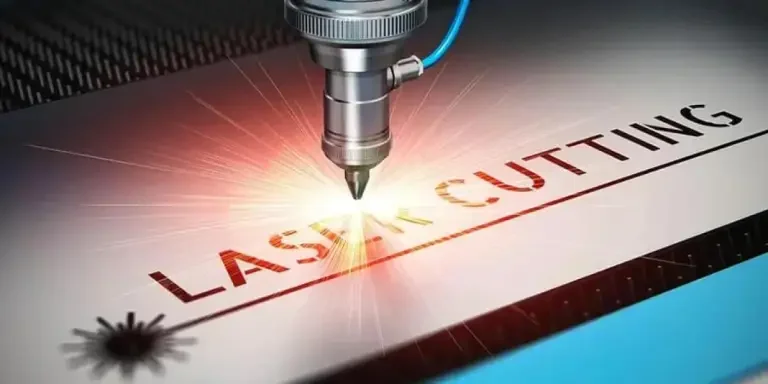Laser cutting robots have the characteristics of high cutting accuracy, fast cutting speed, narrow cutting seam, high cutting quality, good flexibility, excellent flexibility, and stable performance.
A laser-cutting robot is a product of combining laser-cutting technology with robot technology. Laser cutting is to gather the high power density laser beam into a small light spot, and heat has been concentrated highly to realize the local rapid heating of the workpiece, thus resulting in slit cutting. Laser cutting can be succeeded by moving a laser beam. With robot technologies, the flexibility of laser-cutting robots is enhanced greatly to realize flexible cutting in multiple directions and angles. A laser-cutting robot consists mainly of a laser, positioner, controller, arm, end actuator, etc.
The laser in laser cutting robots can be a fiber laser, CO2 laser, YAG laser, etc. Laser cutting robots have the characteristics of high cutting accuracy, fast cutting speed, narrow cutting seam, high cutting quality, good flexibility, great flexibility, and stable performance. Compared with traditional cutting technology, laser cutting robots have outstanding advantages in precision, speed, quality, freedom, and others, and can meet the requirements of automatic production. It is used widely in electronics, home appliances, machinery, automobiles, agricultural machinery, ships, aerospace, and other fields.
The automobile industry is a downstream market for laser-cutting robots. During automobile production, many kinds of part manufacturing need a cutting process, such as vehicle bodies, doors, exhaust pipes, etc. After the traditional cutting equipment completes the cutting, the cutting surface is uneven, there are problems such as corners or burrs, the cutting accuracy is limited, secondary processing is required, and the cutting equipment relies on manual operation, the cutting speed is slow, and errors are easy to occur. Laser-cutting robots can well avoid the above problems and meet the needs of high-end and automatic development of the automobile industry.
According to the 2022-2027 China Laser Cutting Robot Industry Market In-depth Research and Development Prospect Forecast Report released by the New Scientology Industry Research Center, the global laser cutting robot market will be about 88.77 million US dollars in 2021. It is expected that the market will continue to spread rapidly in size at a compound annual growth rate of 14.3% from 2022 to 2027, and will reach 198.2 million US dollars by 2027. Globally the Asia-Pacific region is the largest market for laser-cutting robots, accounting for more than 50% of the demand. It is mainly due to the accelerated transformation and upgrading of the manufacturing industry in the emerging economic system represented by China in the region.
China is the largest auto producer in the world. In recent years, the demographic dividend of China has gradually receded, and the human cost has been rising. Traditional cutting equipment relies on manual operation, which increases the operating cost of enterprises, and the cutting accuracy and cutting speed are difficult to improve significantly. At the same time, the traditional cutting equipment can not meet the requirements of automation development in the auto production line. In addition to the automobile industry, the demand for high-end production equipment in electronics, home appliances, machinery, and others is also increasing rapidly in response to the strategic call of Made in China 2025. In this context, the market space for laser-cutting robots is spreading in China.
According to industry analysts in the New Thinking World, the manufacturers of laser cutting robots in the global market mainly include Switzerland ABB, Switzerland Stäubli, Japan Yaskawa Electric, Japan Fanuc, Japan Kawasaki, Japan Nachi-Fujikoshi, Denmark Universal Robots, USA Coherent, USA IPG Photonics, USA Midwest Engineering, Germany Jenoptik, Germany Trumpf, Germany VECTOR, and China Han’s Laser.
Source from ofweek.com




